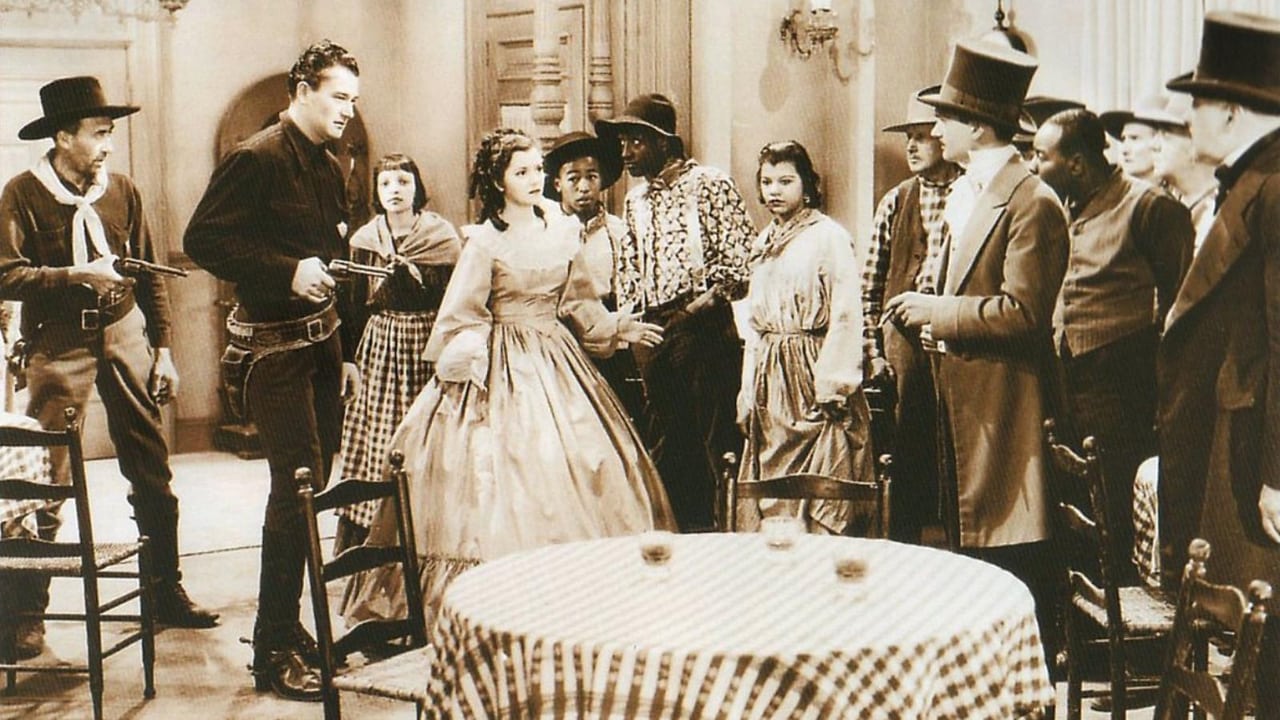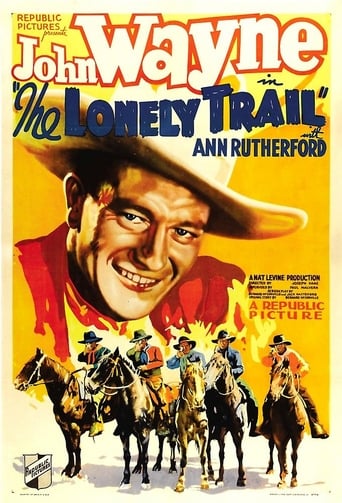

It seems that after the Civil War ended, some resentful Yankees took on the land of Dixie with a vengeance, sending in "Carpetbaggers" to try and teach the people of the south a lesson for having separated from the union. In doing so, these people are breaking the law themselves, stealing their land, increasing taxes to unspeakable amounts, and shooting rumored enemies on sight for no reason other than just trying to fight for their rights. John Wayne plays a Northern soldier who tries to expose the injustice, and takes up with an old childhood pal (Ann Rutherford) who at first doesn't think he's on their side. It's ironic to see Rutherford here, as just two years later, she would be the much younger Andy Hardy's girlfriend in a series of MGM comedies where she appeared to be younger than she was rather than someone who could be the same age as John Wayne. This mixes both comedy and drama with political intrigue, and ranks as one of John Wayne's best Republic films before he went on to superstardom with "Stagecoach". The print released through Olive Films is much better than some of the same films which he did at the same time that fell into the public domain, so that makes this one a lot more watchable, even though many of those films are entertaining in their own right.
... View MoreEarly in his career, John Wayne was a very, very busy man--working in a long string of B-Westerns throughout the 1930s. While all of them are reasonably good, they are so short and so similar that I just can't bring myself to watch them all (and there were MANY). They're not bad, mind you, but they also aren't all that memorable. It seems that when this Wayne film came on TCM I wasn't very busy so I decided to watch--and this is exactly what this film is--a decent time-passer.As the film begins, you can see that this film is influenced by the BIRTH OF A NATION myth concerning the Reconstruction period. According to this myth, the good Souterners were taken advantage of by evil Northern opportunists bent on robbing the Southerners blind and taking away all their freedom. While it is true that there was, for a while, martial law in the Southern states following the Civil War, the truth is that Reconstruction didn't go far enough--soon allowing the old Southern power structure to return and forcing the Blacks back into subservience.While this film is not so offensive and over the top as BIRTH OF A NATION (where all the Blacks were raping idiots), in this film they are portrayed as happy with the status quo and liked their old slave owners. This "happy ex-slave" portrayal is rather insulting and I'm sure it will raise a few eyebrows in many viewers! Fortunately, 21 years had passed since BIRTH OF A NATION and so in addition to showing Black Americans a little more sympathetically, they also ultimately revealed that not ALL the Northerners were evil Carpetbaggers! If you are looking for an accurate history lesson, this is certainly not the film to see! Now as for the rest of the film, Wayne is in excellent form--showing some improvement in his acting skills since earlier films (which were VERY rough). He still wasn't exactly the John Wayne of the 40s and 50s in style, but he was getting close. The plot is also pretty exciting and very watchable--much like a Gene Autry film (but without the cars and phones you might see in an Autry film).Overall, this is very much a 1930s kids' film that is modest in its pretenses but still entertaining and watchable. For die-hard fans of the Duke, it's probably a must-see. For others, it's just a run of the mill 30s Western.
... View MoreJohn Wayne is indeed traveling The Lonely Trail in this film. He's a Texan who enlisted with the Yankee army and has now returned home after the war to the scorn of his neighbors. They've been given less reason than ever to like the color blue. Reconstruction has come to Texas in the position of profiteering carpetbagger Cy Kendall who had a specialty in roles showing corpulent corruption.The more Wayne sees, the more he doesn't like, the trick now is to convince his neighbors he's really on their side.Sad, but this is one of John Wayne's worst films. It abounds in racial stereotyping. East Texas back in the day was not too different from the culture of the Deep South, it had its share of cotton plantations and slaves. Looking at the blacks in this film you would think those Yankees were their enemies as well. Seeing Etta McDaniel and Fred Toone and the other plantation hands singing because of the 'death' of the young master Dennis Moore is one of the worst examples of racism I've ever seen in any film.Only the most devoted fans of the Duke will find anything good in this film.
... View MoreAlthough I am a John Wayne fan, this film was painful to watch. Which begs the question, did John Ford bring something to John Wayne's career that he didn't possess before they worked together? I would say that they both needed each other. The John Ford films without John Wayne weren't that good, and the westerns that John Wayne appeared in like this one (which were not directed by John Ford) were just as bad. So what exactly did John Wayne lack in this film? I think the non-John Ford directed John Wayne westerns lacked a story, emotional depth, colour, scenery and a bit of spectacle. Before the John Ford/Wayne collaboration, westerns were just some B picture, but what John Ford did was to give it spectacle like the Cecil B. DeMille films.
... View More